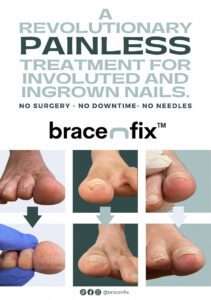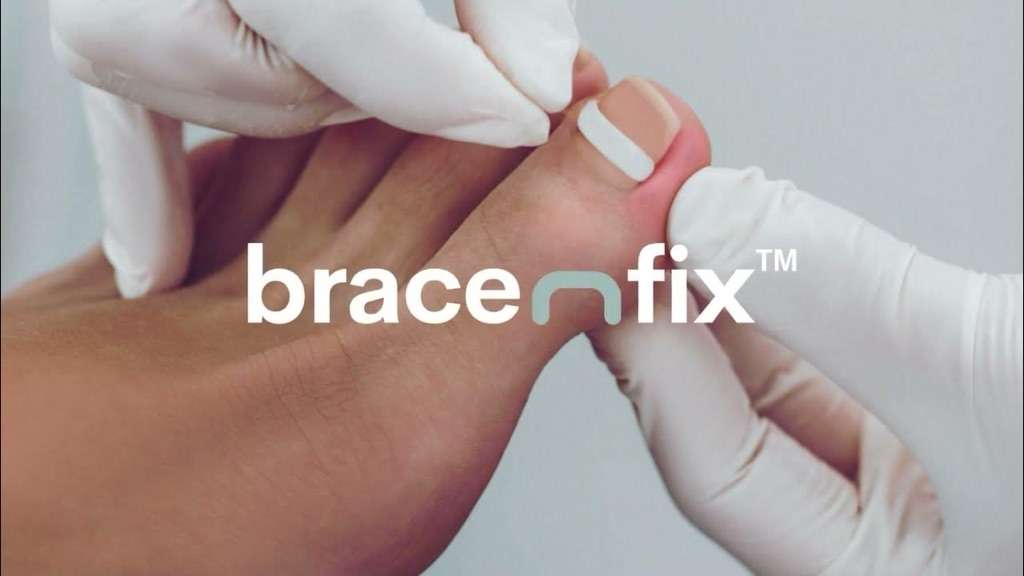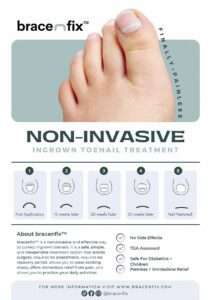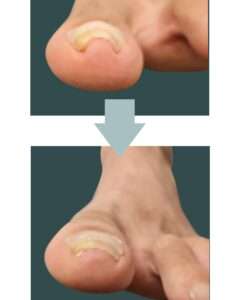BracenFix™: A Revolutionary Solution for Ingrown and Involuted Toenails Without Surgery
Ingrown toenails can be a painful and persistent problem for many people, often leading to discomfort, swelling, and even infection if left untreated. Traditionally, treatment options for ingrown or involuted toenails have ranged from soaking and trimming to painful injections and invasive surgery. However, a groundbreaking new treatment called BracenFix™ is changing the game, offering a non-invasive, painless, and highly effective solution for those looking to avoid surgery.
What is BracenFix™?

BracenFix™ is a treatment specifically designed to address the issue of ingrown and involuted toenails without the need for surgical intervention. Using a unique bracing system, BracenFix™ gently repositions the nail over time, allowing it to grow naturally and pain-free. This method not only provides immediate relief from discomfort but also corrects the underlying issue, preventing the nail from growing into the skin again in the future.
Who Can Benefit from BracenFix™?
The beauty of BracenFix™ lies in its versatility. Unlike traditional surgical methods, this treatment is suitable for a wide range of patients, including:
- Diabetics: For individuals with diabetes, foot health is critical, and invasive procedures carry added risks. BracenFix™ is safe for diabetics, as it doesn’t require cutting or injections, minimising the risk of complications.
- Those with Poor Circulation: Reduced blood flow to the feet can make recovery from surgery more difficult. BracenFix™ eliminates the need for recovery time, making it a safer option for individuals with circulation issues.
- Needle Phobia: Many people dread the idea of needles or injections. With BracenFix™, there’s no need for anesthesia or injections, making the experience completely needle-free.
Anyone Wanting to Avoid Surgery: Surgery can be daunting, and recovery can be lengthy. BracenFix™ offers a non-invasive alternative that allows patients to walk in, walk out, and resume their daily activities immediately.
The Benefits of BracenFix™
BracenFix™ is quickly becoming a popular choice for treating ingrown toenails due to its many advantages, including:
- Immediate Pain Relief: Patients often experience relief right away, as the brace begins to gently lift the nail, preventing it from digging into the skin.
- No Injections or Surgery: With BracenFix™, there’s no need for needles, cutting, or surgical procedures.
- Painless and Comfortable: The process is completely painless, allowing patients to relax during and after treatment.
- Non-Invasive: The BracenFix™ brace is applied externally to the nail, making it a non-invasive solution with no recovery period.
- Safe for Everyone: BracenFix™ is suitable for individuals with diabetes, circulation issues, and those with sensitive skin or feet.
- No Side Effects: Unlike surgery or medications, BracenFix™ has no side effects, ensuring a worry-free experience.
- Resume Daily Activities: There’s no downtime or recovery required. You can get back to your regular activities immediately after treatment.
- Wear Nail Polish: Unlike other treatments that might require nail removal or trimming, BracenFix™ allows you to keep your toenail looking great, with the option to even wear nail polish.
How Does BracenFix™ Work?
The BracenFix™ system works by applying a small, specialized brace to the affected toenail. This brace gently lifts the edges of the nail, preventing it from growing into the surrounding skin and causing pain. Over time, as the nail grows, the brace guides it to grow straight and naturally, eliminating the cause of the ingrown toenail.
The treatment is quick, typically lasting just a few minutes, and patients can walk out of the clinic and resume their daily activities immediately. There’s no need for bandages, and unlike surgical options, there’s no need for any recovery time.
Is BracenFix™ Right for You?
If you’ve been struggling with ingrown or involuted toenails and are looking for a solution that’s painless, safe, and effective, BracenFix™ might be the perfect treatment for you. Whether you want to avoid surgery, have a fear of needles, or simply want a faster, more comfortable solution, BracenFix™ provides immediate relief and long-term results without the risks associated with invasive procedures.
Our podiatrist, Lauren Bayly, is passionate about helping people with these and other foot-related issues. With her extensive training and experience, she’s ready to provide the care and support you need.
 Lauren says, “Podiatry is an incredibly rewarding profession, and I get to help people every day. There’s no better feeling than someone limping into my clinic room and being able to walk out.”
Lauren says, “Podiatry is an incredibly rewarding profession, and I get to help people every day. There’s no better feeling than someone limping into my clinic room and being able to walk out.”
Want to find out more information or book your first consultation?
Call on 7089 6666 or book online here.





